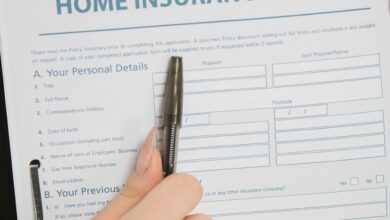How to Add Additional Coverage to Your Home Insurance: A Comprehensive Guide

Home insurance is a vital safeguard for protecting your most valuable asset—your home. However, standard policies often come with limitations that may not fully cover all your needs. Whether you own expensive jewelry, run a home-based business, or live in an area prone to natural disasters, adding additional coverage (also known as endorsements or riders) can provide peace of mind and financial security.
In this guide, we’ll walk you through the process of enhancing your home insurance policy, step by step, so you can ensure your coverage aligns perfectly with your lifestyle and risks.
Why Consider Adding Additional Coverage?
Before diving into the “how,” it’s important to understand why you might need extra protection. Standard home insurance policies typically cover basic perils like fire, theft, and wind damage, but they often fall short in certain areas. Here are some common scenarios where additional coverage becomes essential:
- High-Value Items : Standard policies usually have limits on personal property claims, which may not be enough to replace expensive items like jewelry, art, or electronics.
- Natural Disasters : Many policies exclude coverage for floods, earthquakes, or hurricanes unless you purchase separate endorsements or policies.
- Home-Based Businesses : If you work from home, your business equipment and liability aren’t typically covered under a standard homeowner’s policy.
- Older Homes : Older homes may require additional coverage due to higher repair or replacement costs.
- Liability Concerns : If someone gets injured on your property, increased liability coverage can protect you from costly lawsuits.
Understanding these gaps will help you identify the specific types of additional coverage you need.
Step 1: Review Your Current Policy
The first step in adding additional coverage is to thoroughly review your existing home insurance policy. Pay close attention to the following:
- Coverage Limits : Check the maximum amounts your policy will pay for dwelling, personal property, and liability.
- Exclusions : Look for exclusions—things your policy doesn’t cover. Common exclusions include flood damage, sewer backups, and high-value items beyond a certain threshold.
- Deductibles : Understand how much you’ll need to pay out-of-pocket before your coverage kicks in.
- Special Conditions : Some policies have conditions that limit payouts for certain types of losses, such as water damage or roof repairs.
If you’re unsure about any part of your policy, contact your insurance agent or provider for clarification. They can help you identify potential gaps in your coverage.
Step 2: Assess Your Unique Needs
Every homeowner has different needs, so take time to evaluate what additional coverage makes sense for your situation. Ask yourself these questions:
- Do You Own High-Value Items?
- Expensive jewelry, antiques, fine art, or collectibles may exceed the standard sub-limits for personal property. For example, many policies cap jewelry coverage at $1,500–$2,500. Adding a scheduled personal property endorsement ensures full replacement value for these items.
- Are You at Risk for Natural Disasters?
- If you live in a flood-prone area, consider purchasing a flood insurance policy through the National Flood Insurance Program (NFIP) or a private insurer. Similarly, homeowners in earthquake zones should explore earthquake endorsements .
- Do You Work From Home?
- Running a business from your residence requires additional coverage for office equipment, inventory, and liability. A home business endorsement or a separate commercial policy may be necessary.
- Do You Have an Older Home?
- Older homes often cost more to repair or rebuild due to outdated materials or craftsmanship. Adding extended replacement cost coverage ensures you’re not left footing the bill if rebuilding exceeds your policy limits.
- Are You Concerned About Liability?
- Accidents happen. Adding an umbrella policy provides extra liability protection beyond the limits of your standard home insurance policy, shielding your assets in case of a lawsuit.
By answering these questions, you can pinpoint exactly where your current policy falls short and what additional coverage options to pursue.
Step 3: Explore Available Endorsements and Riders
Once you’ve identified your needs, it’s time to explore the various endorsements and riders you can add to your policy. Below are some of the most common options:
1. Scheduled Personal Property Endorsement
- Covers high-value items like jewelry, watches, furs, and artwork.
- Requires appraisals to determine the item’s value.
- Provides broader protection against perils like accidental loss or damage.
2. Flood Insurance
- Protects against water damage caused by flooding, which is excluded from standard policies.
- Available through the NFIP or private insurers.
- Recommended for homes in low-, moderate-, and high-risk flood zones.
3. Earthquake Endorsement
- Covers damage caused by seismic activity.
- Often includes higher deductibles based on a percentage of your home’s insured value.
4. Sewer Backup Coverage
- Protects against water damage caused by backed-up sewers or drains.
- Affordable add-on that can save thousands in cleanup and repair costs.
5. Replacement Cost vs. Actual Cash Value
- Upgrade your policy to replacement cost coverage , which pays to rebuild or replace damaged property without factoring in depreciation (unlike actual cash value).
6. Home Business Endorsement
- Covers business equipment, liability, and lost income for home-based businesses.
- Ideal for freelancers, consultants, and small-scale entrepreneurs.
7. Umbrella Liability Insurance
- Adds an extra layer of liability protection (e.g., $1 million or more).
- Shields your assets in case of lawsuits stemming from accidents or injuries.
8. Ordinance or Law Coverage
- Helps cover the cost of bringing your home up to current building codes during repairs or renovations after a covered loss.
Discuss these options with your insurance agent to determine which ones suit your needs best.
Step 4: Contact Your Insurance Provider
After identifying the endorsements or riders you want to add, reach out to your insurance provider or agent. Here’s how to proceed:
- Request Quotes : Ask for quotes on the additional coverage options you’re interested in. Compare the costs to ensure they fit within your budget.
- Provide Documentation : For scheduled personal property endorsements, you may need to submit appraisals or receipts proving the value of your items.
- Update Your Policy : Once you’ve agreed on the terms and paid any additional premiums, your provider will update your policy to include the new coverage.
- Confirm Changes in Writing : Always request written confirmation of the changes to avoid misunderstandings later.
Step 5: Reassess Regularly
Your insurance needs may evolve over time, so it’s crucial to reassess your coverage periodically. Life events like purchasing new valuables, renovating your home, or moving to a different location can impact your requirements. Schedule an annual review with your insurance agent to ensure your policy remains comprehensive and up-to-date.





